Secretory phospholipase A2 group IIA modulates insulin sensitivity and metabolism
- PMID: 28663239
- PMCID: PMC5580896
- DOI: 10.1194/jlr.M076141
Secretory phospholipase A2 group IIA modulates insulin sensitivity and metabolism
Abstract
Secretory phospholipase A2 group IIA (PLA2G2A) is a member of a family of secretory phospholipases that have been implicated in inflammation, atherogenesis, and antibacterial actions. Here, we evaluated the role of PLA2G2A in the metabolic response to a high fat diet. C57BL/6 (BL/6) mice do not express PLA2g2a due to a frameshift mutation. We fed BL/6 mice expressing the human PLA2G2A gene (IIA+ mice) a fat diet and assessed the physiologic response. After 10 weeks on the high fat diet, the BL/6 mice were obese, but the IIA+ mice did not gain weight or accumulate lipid. The lean mass in chow- and high fat-fed IIA+ mice was constant and similar to the BL/6 mice on a chow diet. Surprisingly, the IIA+ mice had an elevated metabolic rate, which was not due to differences in physical activity. The IIA+ mice were more insulin sensitive and glucose tolerant than the BL/6 mice, even when the IIA+ mice were provided the high fat diet. The IIA+ mice had increased expression of uncoupling protein 1 (UCP1), sirtuin 1 (SIRT1), and PPARγ coactivator 1α (PGC-1α) in brown adipose tissue (BAT), suggesting that PLA2G2A activates mitochondrial uncoupling in BAT. Our data indicate that PLA2G2A has a previously undiscovered impact on insulin sensitivity and metabolism.
Keywords: hepatic steatosis; high fat diet; insulin resistance; obesity.
Copyright © 2017 by the American Society for Biochemistry and Molecular Biology, Inc.
Figures
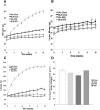

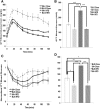
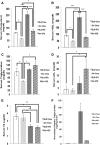
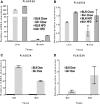

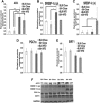
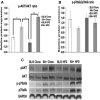

Similar articles
-
Secretory phospholipase A2 group IIA enhances the metabolic rate and increases glucose utilization in response to thyroid hormone.FASEB J. 2019 Jan;33(1):738-749. doi: 10.1096/fj.201800711R. Epub 2018 Jul 18. FASEB J. 2019. PMID: 30020829
-
Group IIA secreted phospholipase A2 (PLA2G2A) augments adipose tissue thermogenesis.FASEB J. 2021 Oct;35(10):e21881. doi: 10.1096/fj.202002481RR. FASEB J. 2021. PMID: 34478587
-
Thyroid hormone status regulates the expression of secretory phospholipases.Biochem Biophys Res Commun. 2014 Jan 31;444(1):56-62. doi: 10.1016/j.bbrc.2014.01.003. Epub 2014 Jan 16. Biochem Biophys Res Commun. 2014. PMID: 24440706 Free PMC article.
-
The roles of sPLA2-IIA (Pla2g2a) in cancer of the small and large intestine.Front Biosci. 2008 May 1;13:4144-74. doi: 10.2741/2998. Front Biosci. 2008. PMID: 18508504 Review.
-
Secretory Phospholipase A2s in Insulin Resistance and Metabolism.Front Endocrinol (Lausanne). 2021 Aug 27;12:732726. doi: 10.3389/fendo.2021.732726. eCollection 2021. Front Endocrinol (Lausanne). 2021. PMID: 34512555 Free PMC article. Review.
Cited by
-
Ellagic Acid Affects Metabolic and Transcriptomic Profiles and Attenuates Features of Metabolic Syndrome in Adult Male Rats.Nutrients. 2021 Feb 28;13(3):804. doi: 10.3390/nu13030804. Nutrients. 2021. PMID: 33671116 Free PMC article.
-
CRISPR-Cas9-mediated knockout of SPRY2 in human hepatocytes leads to increased glucose uptake and lipid droplet accumulation.BMC Endocr Disord. 2019 Oct 29;19(1):115. doi: 10.1186/s12902-019-0442-8. BMC Endocr Disord. 2019. PMID: 31664995 Free PMC article.
-
Lung epithelial cell-derived C3 protects against pneumonia-induced lung injury.Sci Immunol. 2023 Feb 3;8(80):eabp9547. doi: 10.1126/sciimmunol.abp9547. Epub 2023 Feb 3. Sci Immunol. 2023. PMID: 36735773 Free PMC article.
-
Reorganization of Metabolism during Cardiomyogenesis Implies Time-Specific Signaling Pathway Regulation.Int J Mol Sci. 2021 Jan 29;22(3):1330. doi: 10.3390/ijms22031330. Int J Mol Sci. 2021. PMID: 33572750 Free PMC article.
-
Short Linear Motifs Characterizing Snake Venom and Mammalian Phospholipases A2.Toxins (Basel). 2021 Apr 20;13(4):290. doi: 10.3390/toxins13040290. Toxins (Basel). 2021. PMID: 33923919 Free PMC article.
References
-
- Lambeau G., and Gelb M. H.. 2008. Biochemistry and physiology of mammalian secreted phospholipases A2. Annu. Rev. Biochem. 77: 495–520. - PubMed
-
- Kudo I., and Murakami M.. 2002. Phospholipase A2 enzymes. Prostaglandins Other Lipid Mediat. 68–69: 3–58. - PubMed
-
- Murakami M., Taketomi Y., Sato H., and Yamamoto K.. 2011. Secreted phospholipase A2 revisited. J. Biochem. 150: 233–255. - PubMed
Publication types
MeSH terms
Substances
Grants and funding
LinkOut - more resources
Full Text Sources
Other Literature Sources
Medical
Molecular Biology Databases
Research Materials

